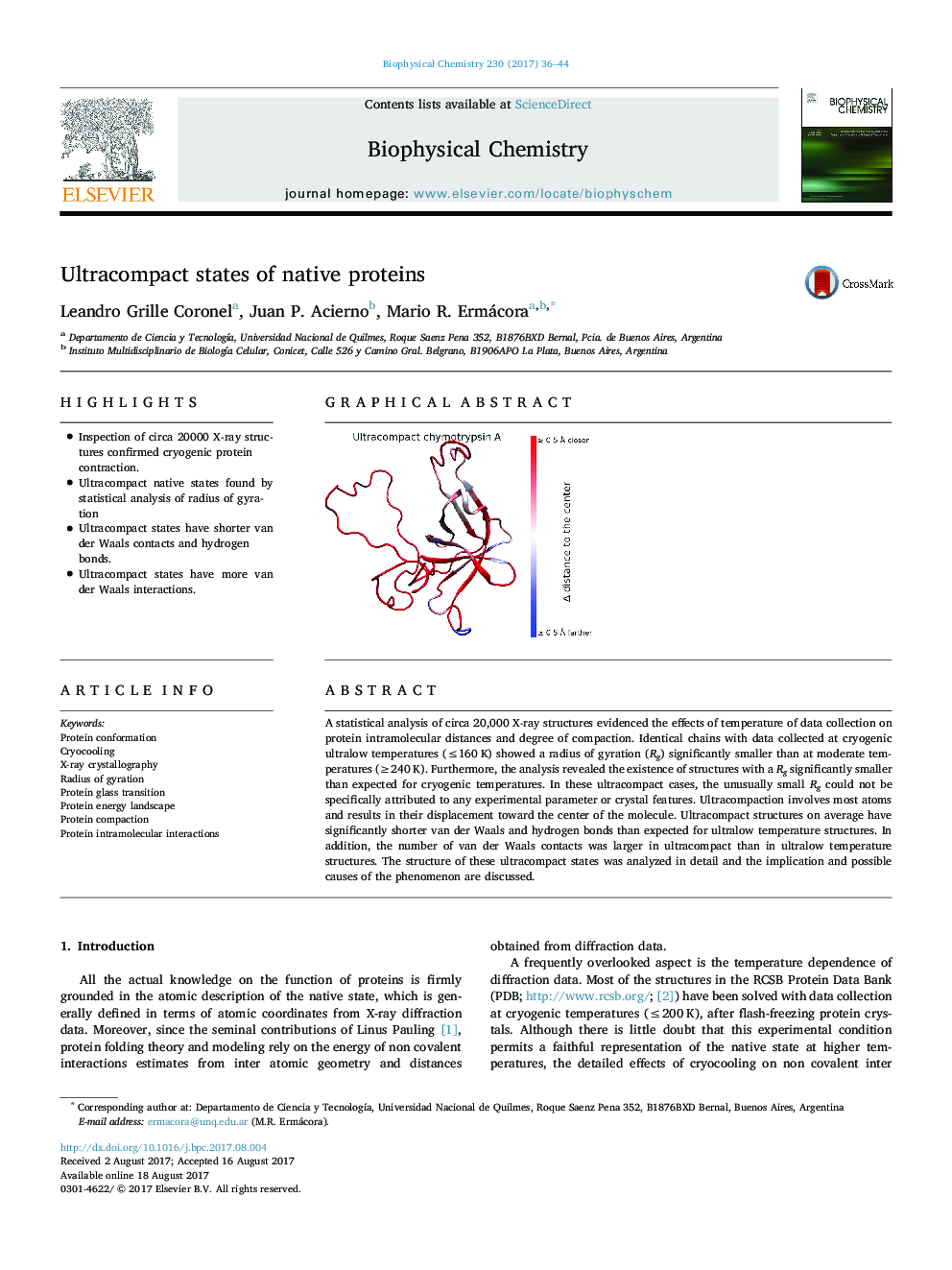| Article ID | Journal | Published Year | Pages | File Type |
|---|---|---|---|---|
| 5370572 | Biophysical Chemistry | 2017 | 9 Pages |
â¢Inspection of circa 20000 X-ray structures confirmed cryogenic protein contraction.â¢Ultracompact native states found by statistical analysis of radius of gyrationâ¢Ultracompact states have shorter van der Waals contacts and hydrogen bonds.â¢Ultracompact states have more van der Waals interactions.
A statistical analysis of circa 20,000 X-ray structures evidenced the effects of temperature of data collection on protein intramolecular distances and degree of compaction. Identical chains with data collected at cryogenic ultralow temperatures (â¤160 K) showed a radius of gyration (Rg) significantly smaller than at moderate temperatures (â¥240 K). Furthermore, the analysis revealed the existence of structures with a Rg significantly smaller than expected for cryogenic temperatures. In these ultracompact cases, the unusually small Rg could not be specifically attributed to any experimental parameter or crystal features. Ultracompaction involves most atoms and results in their displacement toward the center of the molecule. Ultracompact structures on average have significantly shorter van der Waals and hydrogen bonds than expected for ultralow temperature structures. In addition, the number of van der Waals contacts was larger in ultracompact than in ultralow temperature structures. The structure of these ultracompact states was analyzed in detail and the implication and possible causes of the phenomenon are discussed.
Graphical AbstractDownload high-res image (118KB)Download full-size image
